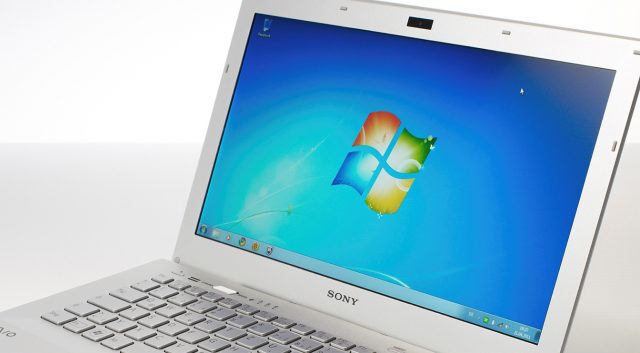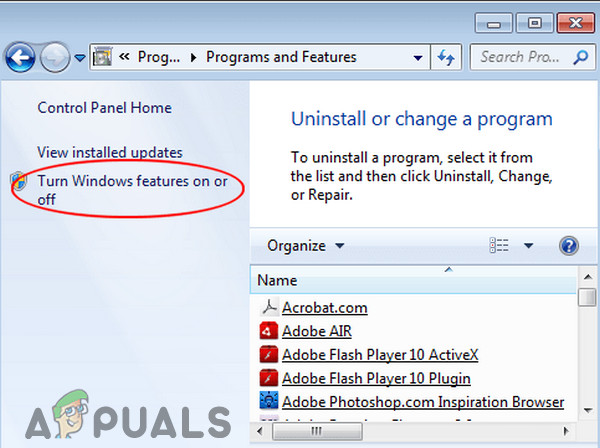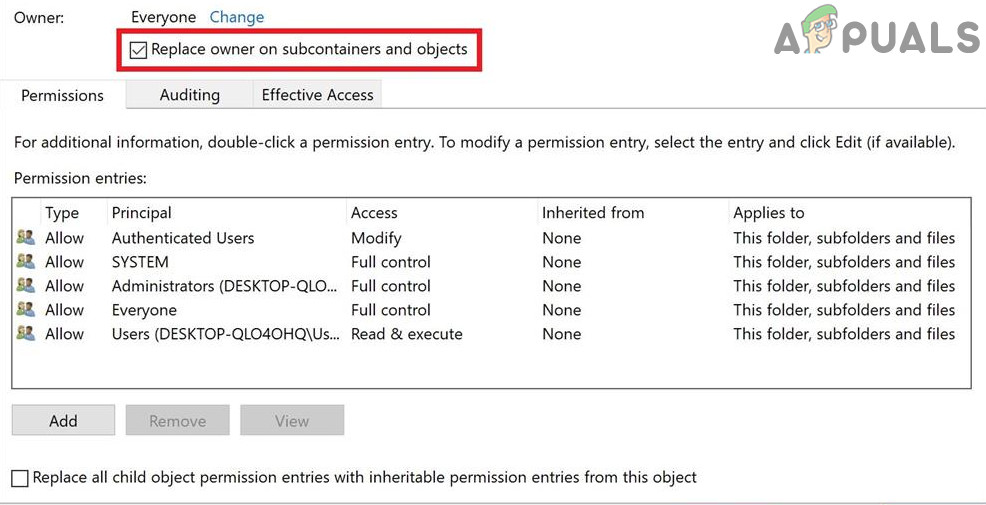Fix: Windows 7 Updates Not Downloading
Even though Windows 7 is quite an old OS, plenty of people still choose to keep on their PCs and they avoid installing new operating systems because of the way Windows 7 was designed. However, as years go by, updates for Windows 7 are harder to acquire and Microsoft is simply not paying enough attention to the OS as they should.

If Windows 7 updates are not downloading properly, you will need to follow the methods located in the article below to fix it. The usual updating issue is that the downloading updates window simply hangs on at 0% downloaded. Let’s try and fix this.
But before moving on with the solution, make sure your internet connection is not marked as a metered connection. Even if it is not marked as a metered connection, turn on downloading over metered connections.
Moreover, leave the system in updating position for at least one or two hours and then check the software distribution folder, if its size has increased then wait till updates are finished.
Do not forget to create a system restore point before trying the solutions.
Solution 1: Download the Prerequisites Needed for the Install
The Windows 7 updating process needs to be prepared for by downloading and installing the prerequisites such as Internet Explorer 11 and .NET 4.6.1. The updating process will sometimes succeed without these tools but to make sure everything goes as it should, downloading these tools is a must.
It’s also to update and verify the integrity of your Microsoft .NET Framework installation, which should be updated fully. Even if you have the latest version installed on your PC, you will need to test its integrity and even repair it if it’s necessary.
Navigate to this link and click the red download button to download the latest version of the Microsoft .NET Framework. After the download has finished, locate the file you downloaded and run it. Note that you will need to have constant access to the Internet.
- After installing the latest version, it’s time to check its integrity. On your keyboard, use the Windows Key + R key combination to open the Run dialog box.
- Type in Control Panel and click OK to open it.

Open Control Panel - Click the Uninstall a Program option and click Turn Windows features on or off.

Turn Windows Features on or off - Make sure you locate the .NET Framework 4.6.1 entry and make sure it’s enabled.
- If the checkbox next to .NET Framework 4.6.1 is not enabled, enable it by clicking the box. Click OK to close the Windows Feature window and reboot the computer.
- If .Net Framework 4.6.1 is already enabled, you can repair .Net Framework by clearing the box and rebooting the computer. After the computer has restarted, re-enable .Net Framework and restart the computer again.
It’s also important to have Internet Explorer 11 installed on your computer before you can download and install the updates to Windows 7. Follow the instructions below to do so.
- Navigate to this link and choose which version of Internet Explorer 11 you would like to download. The most common choice will be to either choose the Internet Explorer 11 (32 or 64 bit) depending on the type of Windows 7 you currently have installed.

Download Internet Explorer 11 - Click on Next and download the installer file on your computer. Locate it in the Downloads folder or simply click on it in the browser download history and follow the instructions on the screen to install it successfully.
- Check to see if you are now able to update Windows 7 successfully.
Solution 2: Download and Install the Updates Manually
It’s always a good choice to try and solve the problem yourself instead of waiting for Windows to stop throwing the error. Manual updates are usually much less prone to errors as the process is not executed automatically. The process of installing is somewhat more complicated but it’s nothing too difficult and you will end up with a fully updated PC.
- Navigate to this page and locate the latest Servicing Stack Update for your version of Windows 7. The current version will be displayed in bold. You will need to install the Servicing Stack Update before you can download and install the July 2016 Rollup.

Download Servicing Stack Update - These updates are a must if you want to avoid the endless search for new updates on your computer as these updates contain the upgraded version of the Update Agent which means you won’t struggle with the future updates.
- Download the files to your computer, close all programs, run the files, and follow the instructions on the screen to complete the update. Make sure you first install the Servicing Stack Update and then the July Rollup.
Check to see if the search for updates is successful.
Note: You may notice that the updates fail to install as soon as you download them. That occurs because the Windows Update service has already started and you will need to disable it before you initiate the installation. Here is how to disable it:
- Open the Run dialog box by using the Windows Key + R key combination. Type “services.msc” without the quotation marks in the Run dialog box and click OK.

Open Services.msc - Locate the Windows Update Service, right-click on them and select Properties.

Windows Update Service - Make sure that the option under Startup type in Windows Store Services’ Properties is set to Delayed Start.

Startup Type Delayed Start - If the service is already running (you can check that just next to the Service status message), you can stop it immediately by clicking on the Stop button.
You may receive the following error message when you click on Stop:
“Windows could not stop the Windows Update Service on Local Computer. Error 1079: The account specified for this service differs from the account specified for other services running in the same process.”
If this occurs, follow the instructions below to fix it.
- Follow steps 1-3 from the instructions above to open Windows Update Service properties.
- Navigate to the Log On tab and click on the Browser… button.

Log On with Other Account - Under the “Enter the object name to select” box, type in your computer’s name and click on Check Names and wait for the name to become authenticated.

Enter Name to Search for the User - Click OK when you are done and type in the administrator password in the Password box when you are prompted with it.
- Click OK and close this window.
While you are still in the Services window, locate the Windows Modules Installer and check to see if its startup type is set to automatic. If it’s not, change its startup type do automatic and check to see if the problem is solved.
Solution 3: Use the Microsoft FixIt Tool
The FixIt tool was specifically designed by Microsoft to help with the updating issues and we highly recommend you try it out, especially if the updating process is stuck at 0%. Some users claim it worked perfectly, others claim it didn’t, but it’s worth a shot.
Download the file by navigating to this link. The file can no longer be found on Microsoft’s official website since they abandoned the project, but this link is more than enough.
You can also download and launch the Windows Update Troubleshooter, and then follow the instructions displayed on the screen to complete the troubleshooting process. Do note that this will require administrative access and some ample time. Once the process is started, it is recommended not to stop it till it completes.
Locate the file in your Downloads folder, run it, and follow the instructions on the screen. The tool will scan your computer for errors. Run the update settings after the scanner finishes and check to see if the updates are installing.
Solution 4: Modify the Permissions for the SoftwareDistribution Folder
Some users claim that the .log file from the location C:\WINDOWS\WindowsUpdate.log contains information that the update service was trying to write to the SoftwareDistribution folder but it failed to do so.
We recommend you navigate to the same location and check to see if a similar message is displayed. If it is, follow the instructions below to modify access and give permission to modify the contents of the folder.
- Open File Explorer, and then locate the SoftwareDistribution folder by navigating to this location:
C:\windows\SoftwareDistribution\
- Right-click the folder, click Properties, and then click the Security tab.

Open Security Tab - Click the Advanced button. The “Advanced Security Settings” window will appear. Here you need to change the Owner of the key.
- Click the Change link next to the “Owner:” label The Select User or Group window will appear.
- Select the user account via the Advanced button or just type your user account in the area which says ‘Enter the object name to select‘ and click OK.

Find the user account - Optionally, to change the owner of all subfolders and files inside the folder, select the checkbox “Replace Owner on subcontainers and Objects” in the “Advanced Security Settings” window. Click OK to change the ownership.

Replace Owner on subcontainers and Objects - Now you need to provide full access to the file or folder for your account. Right-click the file or folder again, click Properties and then click the Security tab.
- Click the Add button. The “Permission Entry” window will appear on the screen: Windows 10 take ownership 7 permission for entry
- Click “Select a principal” and select your account. Set permissions to “Full control” and click OK. Optionally, click “Replace all existing inheritable permissions on all descendants with inheritable permissions from this object” in the “Advanced Security Settings” window to gain access to internal files and folders.
Solution 5: Update After Clean Booting the System
The problem may occur because of other services interfering with the updating process. This can only be fixed by running the update in the clean boot without anything unnecessary for the system to work.
While you are in clean boot, run the updating process and wait for it to finish. After the updates have downloaded and installed successfully, you can exit the clean boot mode and continue using your PC normally.
Solution 6: Turn off Firewall
Several users have reported that the Firewall caused these issues for them and the only thing they needed to do to fix the problem was to disable the Firewall. We will use Windows Firewall for illustration purposes, you may follow the instructions as per your Firewall.
- Open Control Panel by searching for it after pressing the Start button located at the bottom left part of your desktop.
- Change the View by option to Small icons and locate the Windows Defender Firewall option.

Open Windows Defender Firewall - Click on it and select the Turn Windows Firewall on or off option located at the menu on the left side of the window.
- Click the radio button next to the “Turn off Windows Firewall (not recommended)” option next to both the Private and Public network settings. And check if you can download updates.

Turn Off Windows Firewall
Solution 7: Install Updates Manually
Installing the updates automatically without warning the users is not recommended in all cases since the process can slow down your computer without your knowing it and it’s not recommended to everyone, but changing the settings like this may help you fix this problem in particular.
- Navigate to Control Panel >> System and Security >> Windows Update and locate the “Never check for updates (not recommended)” option and click OK.

Never check for updates (not recommended) - Install KB3020369& Restart
- Install KB3125574& Restart
- Install KB3138612& Restart
- Install KB3145739& Restart
- Install the cumulative rollup: January 2017 (KB3212646) & Restart.
- Also, Change the Windows Update setting to Install updates automatically (recommended) and click OK. This should reset the problem and the update should proceed to download.
We have covered similar issues in other articles which may help with this situation as well. If the methods listed above did not resolve the issue for you please do check the following guides: Windows 7 Stuck on Checking for Updates.